Australia is a hot continent, and unless you live in Tasmania, there’s no way to escape it.
And if you love hiking or the outdoors, it’s almost unavoidable to not have to deal with the ferocious Aussie sun at some point.
Couple that with a warming climate, managing heat well is going to be more and more important for many of us.
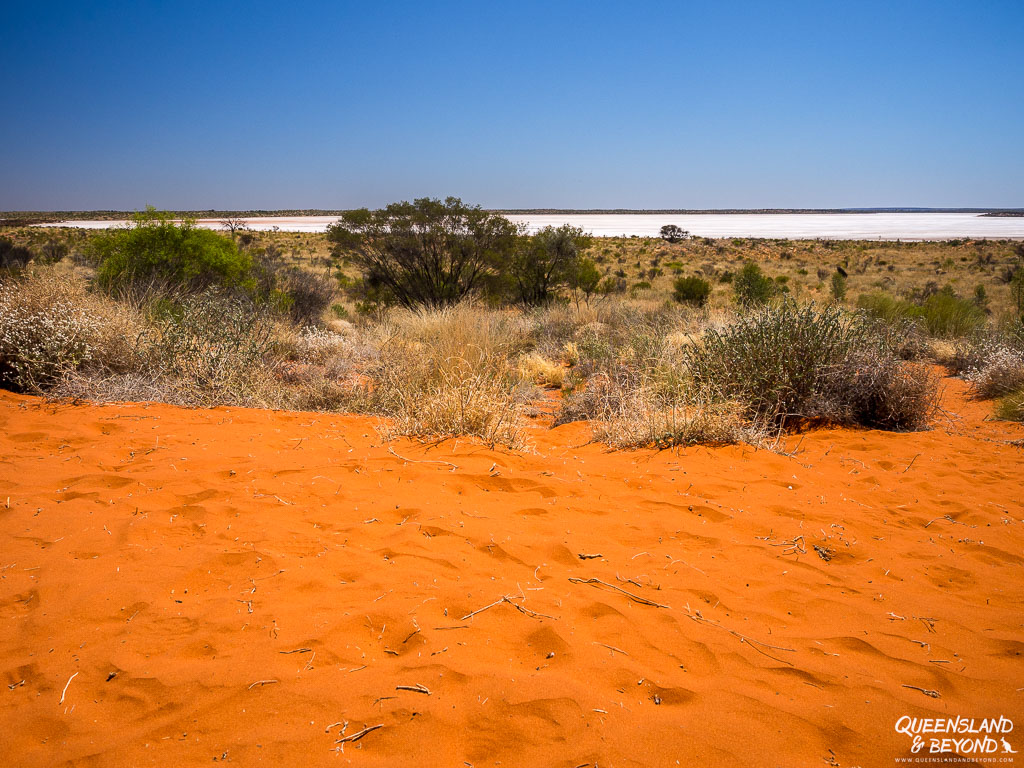
It’s no secret that I’m no lover of heat, let alone hiking in the heat.
I don’t like temperatures above 27°C in general, whether I’m hiking or not (which is clearly why I live in Queensland). My favourite hiking temperature is around 18-20°C but that’s a luxury I rarely get to enjoy. (Really… I should be living in New Zealand or at least Tassie.)
I’m also finding that the older I get, the less able I am to tolerant heat well (not that I’ve ever been great at it). As we age, our bodies are less able to release heat as effectively (thermoregulation) as when we’re younger, making us more susceptible to heat-related illness in general.
So… since warm, hot or humid weather can’t always be avoided, here are my best tips for hiking in hot weather.
They’re pretty common sense but since I’ve had to learn through rather painful experiences (i.e. ending up in hospital with heat exhaustion a few years ago), it might be useful to share what works for me.
Disclaimer: This post contains some affiliate links.
7 PERSONAL TIPS FOR MANAGING HEAT WHEN HIKING
As I said, none of these tips are rocket science. But keep in mind that everyone’s different and handles the heat differently. The fitter you are (= less exertion), the better you will be able to handle the heat as your body temperature stays more stable.
1. PLAN AHEAD AND PLAN WELL
Choosing your season for travel well seems such a basic strategy but I feel that people often ignore this, especially if you’re not from around Australia.
Know when to visit Australia, and visit the different regions of Australia in their appropriate season.
For example, exploring Central Australia in the middle of summer (December to February) is just a mad idea. Temperatures will be in excess of 40°C and with rocks radiating heat and often not much shade on trails, it is unwise to go hiking at this time of the year.
The desert air is also extremely dry, impacting how much physical exertion your body can withstand.
You won’t meet a lot of locals out and about in the summer, especially not in the middle of the day, so why would you go?

In fact, trails like the Larapinta, the Jatbula or the Thorsborne are only open from April/May to September/October. It is just too hot otherwise and people end up dying.
I learned the hard way that by early September, the Top End of Australia can already be very hot. Hiking on a 40°C day on a rocky and exposed trail is perhaps not the smartest thing to do.
Which leads me to: check the weather forecast before heading off and be willing to change your plans. Either by not doing a hike at all, choosing one that offers more shade or is less strenuous, or doing a smaller section of it.
2. HIKE EARLY
This one is so basic and one we religiously stick to for multiple reasons.
Just to be clear, starting your hike early doesn’t mean 8am or 9am, that is way too late in hot weather. Hiking early means leaving before or around sunrise unless you’re doing a very short hike.

For day hikes, I get everything ready the night before (e.g. make lunch, pack snacks and water, have hat, clothes and camera gear ready, etc.). That way, all I have to do in the morning is get dressed, wash my face, eat some light breakfast and go.
When we were hiking the Larapinta Trail, we were generally on our way by 6am or 6:30am at the latest. Some mornings when we knew it would be a hot (or long) day, it was even earlier (and yes, that meant getting up in the dark at 4:30am to pack up etc.).
Starting your hike early not only means you’re (hopefully) avoiding most of the heat and return/finish before the midday sun starts beating down on you. But you also get to enjoy nature and creation at its best.
I love the early mornings for their soft light and the usually abundant bird life. And I get a wonderful sense of ‘accomplishment’ when I’ve already walked 10-12km by 10am.
The other option is to go in the late afternoon once the heat has dissipated but you really have to judge your hike and the time you need then. We’ve run out of daylight more times than I can count.
3. STAY HYDRATED
Drinking plenty of water seems so obvious but I’ve made this mistake over and over. Headaches are my first sign that I’ve not drunk enough. Again.
What I did not realise for years is that hydration doesn’t start with the moment you start hiking. It starts the day (or even days) before. Being well-hydrated before you leave is absolutely key to managing heat well.
If you’re leaving on your hike already dehydrated from the night or the previous day, things aren’t off to a good start.
I was petrified that I would be hiking the Larapinta with constant headaches, both from dehydration, the dry desert climate and the strain of carrying a hiking pack. So our strategy was to hydrate really well even before we got to Alice Springs, let alone having started our hike.
Once on the trail, I would drink 500-750ml (+ ~600ml protein smoothie) every morning before we’d even start while the husband would drink almost 1 litre of water. (And yes, it is annoying to have to have so many toilet breaks but if you can avoid heat exhaustion, it’s worth it.)
On average, I carried 3-4l of water a day, and then we would drink another litre once in camp. It seemed insane at first but we got used to it, and more amazingly, neither of us really suffered from headaches.
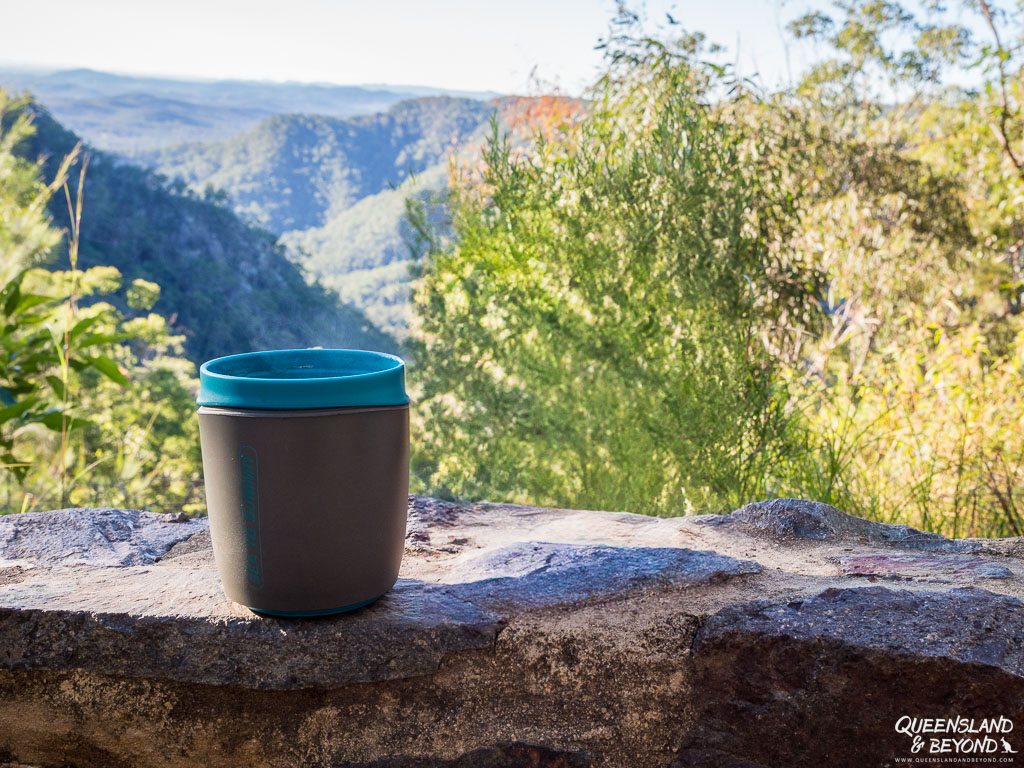
Obviously, everyone’s different and the fitter and more used to heat you are, the better being somewhat dehydrated will probably go for you.
On day hikes (or particularly strenuous ones), I carry around 3 litres of water. I also have another bottle full of electrolytes (more below), and try to hydrate well before and after the hike.
A good guide is usually to plan 1 litre per hour for hot weather.
In dry climates (e.g. Outback Australia), it doesn’t have to be super hot for you to get dehydrated. You may not even feel like you need to drink, especially on milder days. Drink anyway.
I find water bladders work best for hydrating frequently as it’s so easy to sip water without having to pull a bottle out or stop to drink.
The husband and I have this game where we have to take a sip of water every time we see a marker on the trail. Works like a treat! 😁
4. USE ELECTROLYTES
I generally don’t go hiking without electrolytes anymore (unless it’s a short hike, i.e. less than 5-6km, or I’m in a cold area). I sip on electrolyte water even if I don’t feel I need it. Sometimes I also have another 500ml of water with electrolytes once I’ve finished a hike.
In addition to my 2-3l of water, I carry a separate bottle (0.5-1l) of water with electrolytes added. I sip on this throughout the hike. I may not always physically need it but it helps me mentally as I do not want a repeat of my hospital episode because of dehydration and heat exhaustion.

Electrolytes are fantastic for replacing minerals and salts you lose when hiking in hot weather. The trick is to buy good quality ones so you don’t drink a whole heap of artificial sweeteners, colours and flavours as well.
I find most electrolytes pretty disgusting, they’re either sickly sweet or taste completely artificial. I tend to dilute them a bit more than you technically should since I find them too overpowering otherwise.
I stick to three brands:
The first one, BioTrace, is unflavoured and literally just salt and potassium. It does taste like salt water and isn’t overly pleasant but you avoid any kind of additives, including sugar. It comes in a liquid (you just add some drops to water) so is not as suitable for taking on an overnight hike as dry electrolytes.
The other two I like are Pure, which comes in a powder so you can measure it out yourself, and Nuun, which is conveniently in tablet form (but creates more rubbish). In addition to the mineral salts, Pure uses actual sugars (sucrose and glucose) whereas Nuun relies on stevia for sweetening.
Not all flavours are created equal so I stick with the basic ones like lemon or orange (though the Nuun berry flavours aren’t bad either).
You might find the Nuun ones in specialised sports gear shops but I tend to order them from overseas as it’s just really hard to find in-store in Australia. Pure is usually available in hiking and camping stores like Wild Earth or Snowys.
5. WEAR A HAT AND APPROPRIATE CLOTHING
If you’re an Aussie you know this. If you’re not, you learn it very quickly.
Wear a hat when hiking in anything from mild to hot weather. I think the only people I see not wearing hats out on the trails are people from overseas who have no idea how insane the sun in Australia is.
Ideally wear a wide-brimmed hat but I can’t say I stick to that much, mostly because I have a really small head and it’s surprisingly difficult to find hats that fit me. So I tend to wear a beloved baseball cap and a lightweight buff around my neck to protect that part of my skin from the sun.
I’m also not a big fan of hiking in long pants but plenty of people do and it is the sun-smart thing to do. I prefer shorts but then I do have to deal with the sun exposure on my legs and potentially wear sunscreen.
I find covering my arms nowhere near as annoying and hot as covering my legs. So I do like wearing lightweight long-sleeve shirts that are loose-fitting.
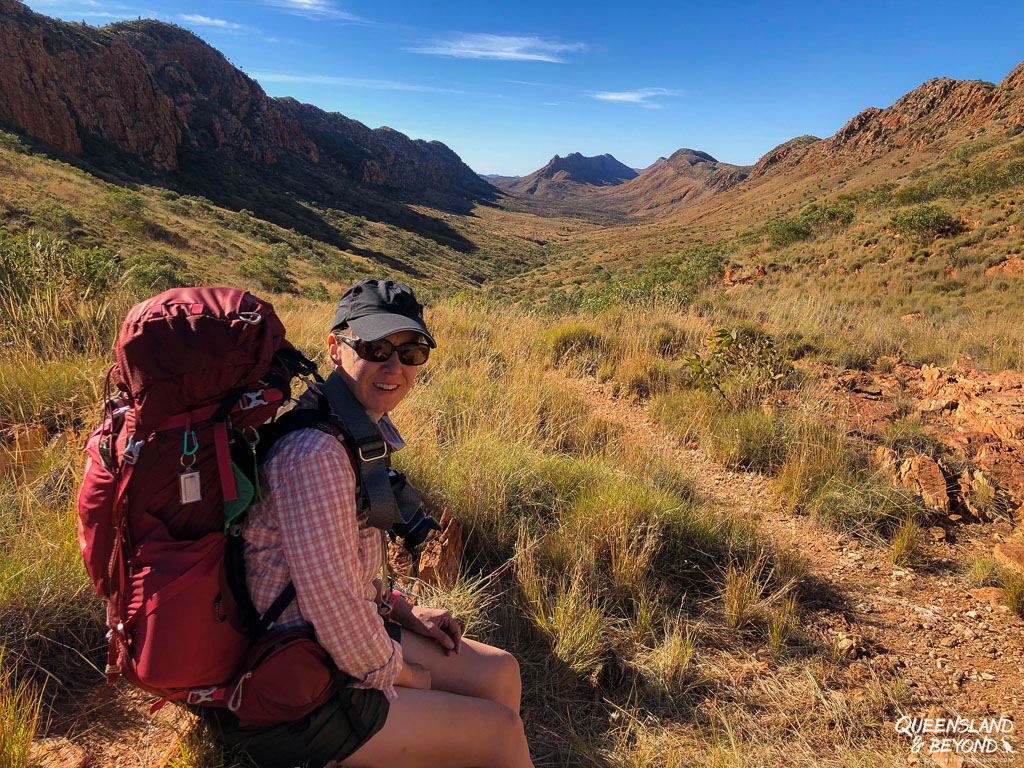
Consider your socks too.
I’ve been wearing Icebreaker socks for hiking for many years, and have a range of socks that cover anything from ultralight to medium weight (= thickness). Depending on your hike, you may want to switch to lighter shoes as well but don’t go in thongs. That’s just silly.
Lastly, make sure you’re not picking the darkest colours in your wardrobe either, you don’t want to store more heat than you absolutely have to.
Need I mention sunglasses?? I barely ever leave the house without my sunnies, I have terribly sensitive eyes and wear mine constantly.
6. PACK SALTY SNACKS
Salty snacks are great in hot weather.
You need to keep eating in hot weather to keep up your energy levels. I often don’t feel like eating on hot days but it’s really important to not just drink.
For day hiking, salted popcorn is great as it’s lightweight and not as easily crushed as potato chips. It’s a bit bulky for multi-day hikes but that might just depend on what else you’re taking.
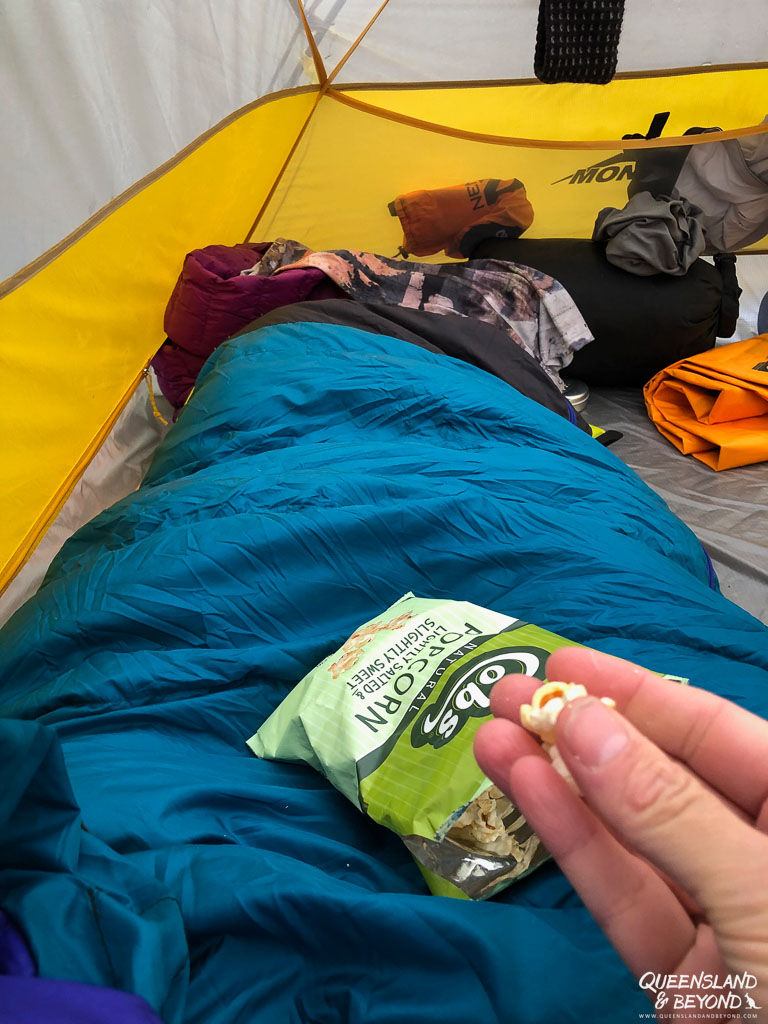
I also like to take peanut butter “sandwiches” (= ‘corn thins’ for fellow gluten-free hikers). Again, very lightweight and if you leave them at the top of your pack, not too easily crushed either.
Dried chickpeas are another option but I find the plain version too unpalatable (they become too pasty for my liking). I tend to buy the ‘flavoured’ ones with lime and salt, raspberry or chocolate (though the latter’s not as good in hot weather).
Of course, nutbars without too much sweetening or simply nutty trail mix are great for fat, protein and some extra salt.
7. KNOW THE SIGNS OF HEAT EXHAUSTION
Speaking from experience, hiking in the heat can easily lead to heat exhaustion and heat stroke with potentially fatal consequences. Germans are particularly prone to ignore the early signs since they always seem to be the ones dying in the outback.
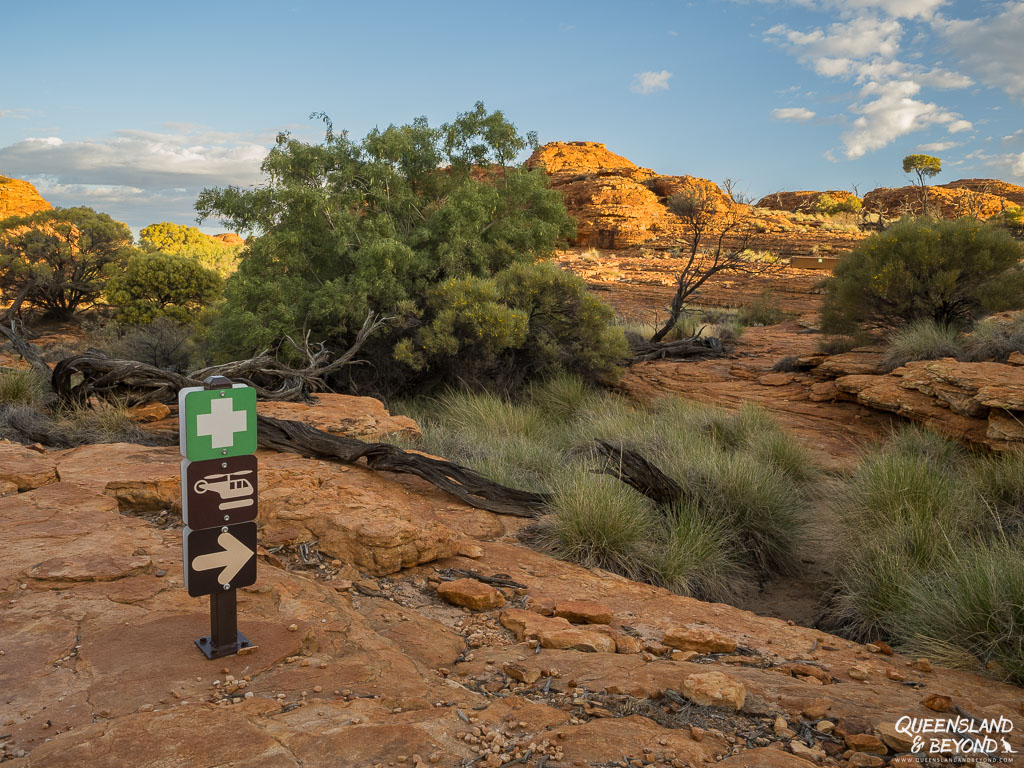
Headaches are one of my early signs that I need to up my fluid intake, eat something, slow down and maybe rest for a bit in the shade. As things progress, I tend to stop sweating, start feeling shaky and dizzy, and yet feel like I don’t need to drink.
Other symptoms of heat exhaustion include:
- feeling lightheaded or dizzy
- feeling nauseous or sick
- vomiting and diarrhoea
- feeling lethargic
- muscle cramps
- feeling disoriented and confused – this really impacts your decision-making ability and can lead to people wandering off even well-formed tracks and getting lost
From here it’s all downhill – from your body’s inability to regulate temperature, not being able to sweat to cool yourself down, to organ failure, seizures and physical collapse.
Heat-induced illness is serious and can have potentially fatal consequences. St. John Ambulance Australia has a useful fact sheet on what to do in situations when someone is suffering from heat-induced illness.
FINAL THOUGHTS
If you live in Australia or plan to hike in Australia, chances are that you’ll be hiking in hot weather at some point.
Plan well, know your limits, follow some simple strategies for managing the heat, and your next hiking adventure awaits!
Stay safe in the heat,

MORE INFORMATION
- “Stay safe in the heat in parks” Parks and Wildlife NT
- “Warm weather hiking” Queensland Parks and Wildlife Service
- “Beat the heat” Sports Medicine Australia (fact sheet)
- “Heat-induced illness” St. John Ambulance Australia (fact sheet)
SAVE TO PINTEREST
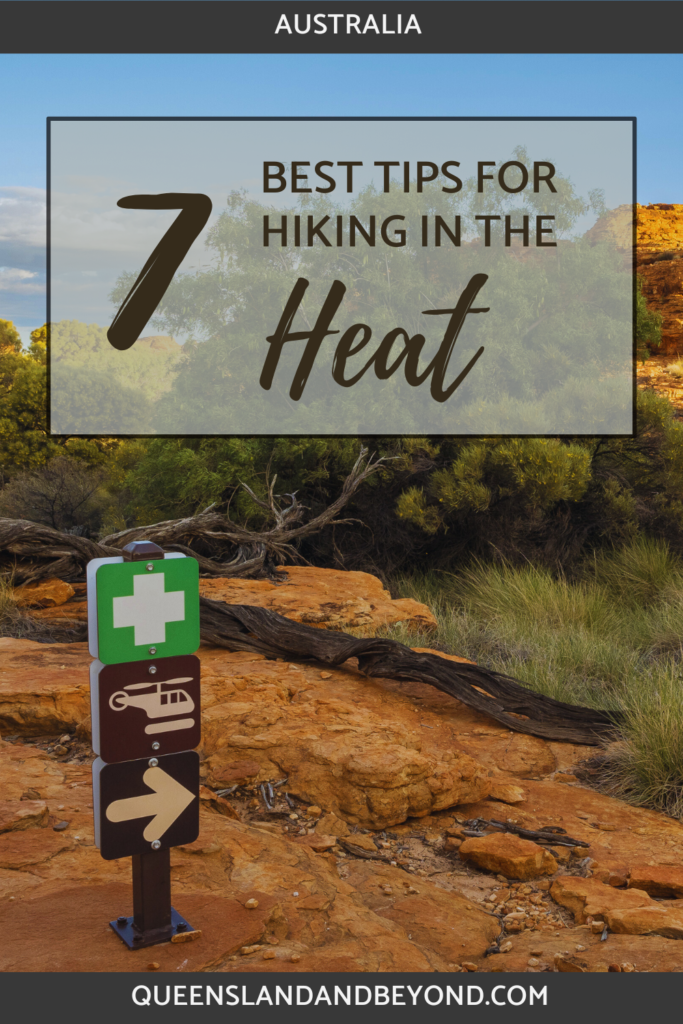
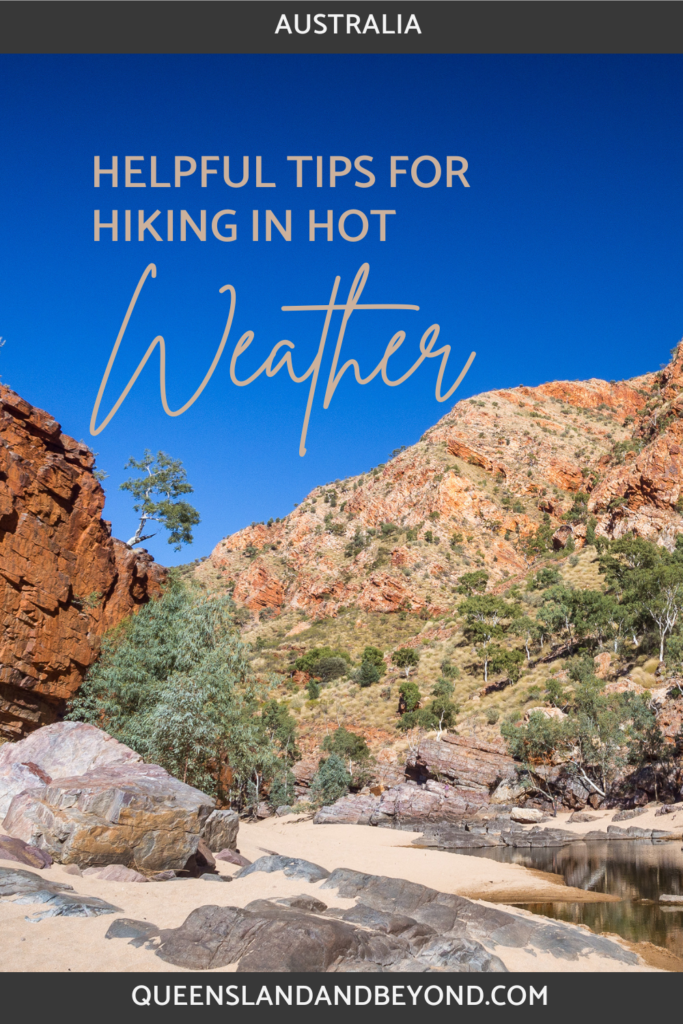


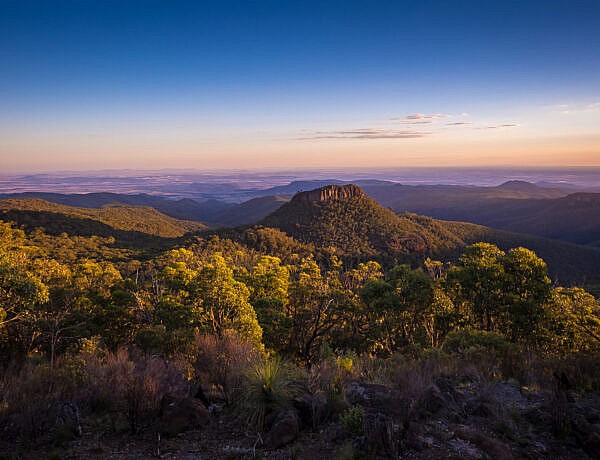


No Comments